I sincerely hope that friends who are currently confused in the crypto space can absorb this and avoid some detours; otherwise, hitting the wall can be very costly!
Today, I’m sharing real insights with everyone. The message is short but piercing; you’ll have an epiphany after reading it!
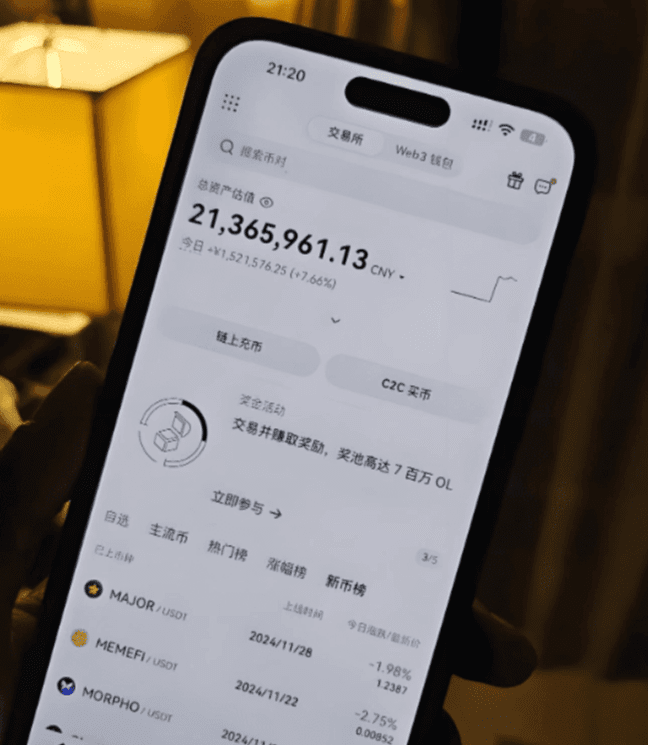
As someone with ten years of cryptocurrency trading experience, I have weathered storms and crossed bull and bear markets. My ability to stand firm in the crypto market relies entirely on these ten golden rules; they are the crystallization of wisdom I have gained over the years! Please read carefully, reflect on yourself, and I believe you will draw valuable insights from this!
Every word is precious; each one deserves your careful consideration and repeated reflection. Following these rules may save you years of detours and potentially multiply your wealth by millions!
It’s crucial to maintain a sense of awe towards the market. Continuously learn, research in depth, and keep improving your trading system to acquire new knowledge. Do not become complacent due to temporary victories, thinking you are invincible! Only by staying vigilant and flexibly responding to various market changes can you laugh last in this tumultuous ocean!


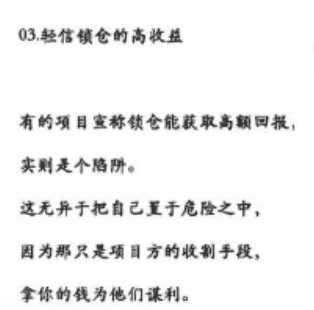
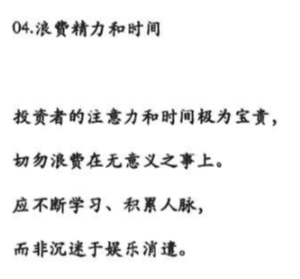



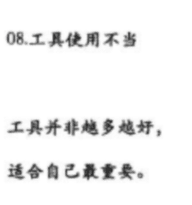
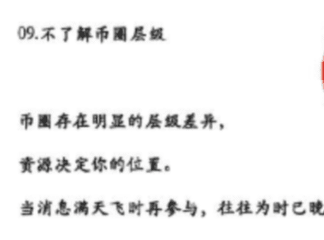



Success never comes easily; opportunities always favor those who are prepared. No matter how the future of the cryptocurrency space changes, I am willing to join hands with you to create brilliance together!
Trading Mastery Compilation: (Cage Trading Method)
Cage Trading Method (Cage Trading Method) Introduction: The market operates according to an ancient and unchanging rule: big fish eat small fish, small fish eat shrimp, and shrimp eat scraps. This is also a biological evolution process that aligns with the laws of nature.
It is precisely because of the evolution of this rule that the Cage Trading Method has slowly developed and evolved based on market trading psychology. By setting aside complicated and vague fundamental data and chaotic technical indicators, we return to the essence, focusing on K-lines, prioritizing practical operations, and profits while standing firm in all types of investments.
One of the cage patterns: breaking through previous highs and lows.
After the market forms a peak, there is often a signal to short; retail investors definitely enter at this position. Of course, the market continues, and the main players wait for retail investors to enter before operating in the opposite direction.
As shown in the diagram: after retail investors enter short positions, they may engage in three types of operations in the following trading days:
Adjusting the insurance.
Do not change the stop loss.
Place breakout long orders above previous highs. When the main players operate in the opposite direction and break through previous highs, we can observe the consequences of the three types of operations taken by retail investors.
First, the first type of stop loss is triggered, then the second type, followed by entering long positions on breakouts, and subsequently setting stop losses.
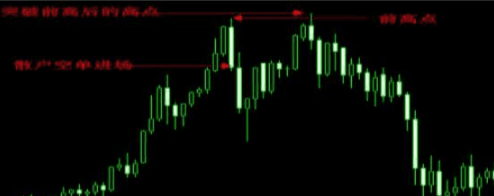
When the market's main players break through previous highs, retail investors will trigger stop losses, liquidate positions, and lose money; this is when the main players truly change directions.
As shown in the diagram: after the second peak K-line gives the signal, short, set stop loss at the peak of the K-line signal, and aim to exit below the inverse cage.
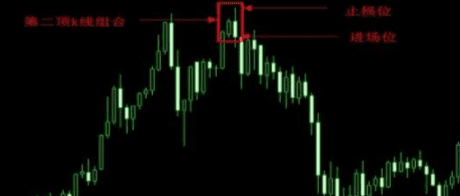
Six years ago, I left a high-paying job in the eyes of friends and family to trade cryptocurrencies full-time, and I suddenly grasped the underlying secrets.
1. Select coins cautiously: faced with a complex and ever-changing array of coins, it is essential to stay clear-headed. For those with unclear situations and higher risks, exercise caution and avoid blindly following trends.
2. Diversify investments: even if you are very optimistic about a certain coin, do not invest all your funds into it. The market is unpredictable; investing in batches can reduce risk.
3. Timely stop losses: if you mistakenly buy a coin that is in a downtrend, sell immediately to prevent further losses.
4. Be flexible: if the coins you hold are not losing but are showing weakened trends, consider exiting in a timely manner to maintain capital flexibility.
5. Focus on strong cryptocurrencies: prioritize those in an upward trend and avoid wasting time on weak ones.
6. Avoid excessive trading: while short-term trading can bring excitement, in the long run, frequent operations often lead to heavy losses. Focus on a few promising coins for better long-term gains.
7. Price is not the only standard: just because a price is cheap or has dropped significantly does not mean it is a reason to buy. Similarly, just because a price is high or has risen significantly does not mean it is a reason to sell. The key lies in the underlying value and market prospects.
Investment advice:
1. Select quality coins: prioritize choosing strong coins with potential while paying attention to market hotspots to achieve dual benefits of investment and speculation.
2. Enhance adaptability: for traders, the ability to flexibly respond to market changes is crucial.
3. Clearly define your investment cycle: start with a broad cycle for qualitative analysis, combine weekly and monthly charts for coin selection and assessment, and track in real-time using daily charts.
4. Adhere to investment rules: establish and adhere to your own investment rules, such as using Bollinger Bands and other technical indicators to assist in decision-making.
5. Accumulate experience: by continually repeating successful experiences, let profit become a habit. Consistent small profits are often more important than occasional large profits.
Layout and strategy:
In-depth research:
Before making arrangements, conduct in-depth research on the fundamentals, technical aspects, and market prospects of various coins.
Combine diversification with concentration: make relatively concentrated investments in a few selected potential coins while maintaining a certain level of capital diversification to reduce risk.
1. Use spare money for investment; avoid borrowing money to trade cryptocurrencies.
2. Strictly filter valuable coins and create a reasonable capital allocation plan that aligns with reality.
3. Averaging down: it is normal to see a pullback after entering a position, so allocate your funds reasonably and enter in batches.
4. Refuse to go all in; allocate positions reasonably; don’t put all your eggs in one basket to effectively reduce risk.
5. Keep an eye on the surroundings - pay attention to cryptocurrency news and the latest financial and economic information; knowing early means understanding early and earning early.
6. Think inversely, do not oppose the main players or the market, go with the flow and act according to the trend.
7. For contract positions, do not fully invest, keep leverage below 5x, don’t easily use 100x leverage, and it's best not to touch leverage at all. Seek steady profits rather than a quick fortune.
8. Control your earnings well; managing your position is more important than anything else. If you are unsure, don’t operate lightly. If you don't operate, there is no risk, and you won't lose money. Take time to check your assets and see if they are managed properly.
9. Keep the bottom and top in mind, do not fear; the crypto market will only help you grow. Your mindset is more important than your operations.
Keep the cryptocurrency trading methods in mind; you won't worry about not making money!
How to avoid liquidation in cryptocurrency contracts?
Liquidation in contracts is not a matter of luck but of operation. If you want to survive in the market for a long time, keep the following points in mind:
1. Low leverage + light positions; don’t risk your life for profit.
New traders should use 3-5x leverage; even experienced traders shouldn't recklessly open positions with over 10x leverage.
Control your position within 20-30% of total capital, so when a major market move comes, you won't be wiped out in an instant.
2. Set stop losses, do not resist positions, and run if you're wrong.
Not setting a stop loss = waiting to die; you should think about how to exit before opening a position, generally setting a stop loss within 3-5% of the opening price.
If you're wrong, admit it; resisting will only lead to greater losses, ultimately resulting in liquidation.
3. Keep a close eye on the strong liquidation price; don't let the system harvest you.
Contracts have a strong liquidation price; being too close to this price means putting your life in the hands of the market.
If you have enough funds, appropriately add some margin, but don’t add positions mindlessly; otherwise, you will accelerate the explosion.
4. If you incur losses, don't get impulsive; don't add positions recklessly.
Trying to recover losses will likely result in 99% of cases leading to greater losses.
Go with the trend; don’t harden your stance in a volatile or one-sided market. Adding positions against the trend is basically giving away profits.
5. Spot + Contracts, learn to hedge.
If you hold BTC or ETH long-term, you can appropriately open hedge positions:
Holding BTC and looking bearish in the short term? Open a short hedge to reduce losses.
Holding ETH and wanting to earn more? Take a small long position, but keep your leverage stable.
6. Stay away from scam coins; don’t touch high-risk ones.
Small coins are highly volatile and can liquidate in an instant, while mainstream coins (BTC, ETH) are relatively more stable.
During extreme market conditions (sharp rises and falls), avoid high leverage; otherwise, you might face dire consequences.
7. Don't go all in at once; entering in batches is safer.
Do not go all in at once; build positions in batches and gradually increase your investment. Even if the market fluctuates violently, there will be room for adjustment, and it won’t blow up directly.
Survival is the first step to turning things around.
The worst for contracts is over-leveraging, resisting positions, and being overly aggressive; manage your position well, set strict stop losses, and avoid recklessly opening leverage to avoid being slapped down by the market.
Why do we firmly believe that the bull market is still ongoing and that the second half of the year will see an altcoin bull market?
So let’s start with the conclusion: from now (March) until mid-year (June), it is the best time to invest in quality coins. The market will likely see a strong surge in the second half of the year, making the current bottom-fishing highly cost-effective.
So now is the time to make cash flows through trading and invest steadily to accumulate quality chips!
Currently, too many people are feeling pessimistic about the market. After Bitcoin's drop from the high of $110,000, the market sentiment is very low, and many people are even declaring the bull market over. However, if you carefully analyze the market data, you will find that we are not in a bear market, but rather in a mid-cycle correction of the bull market, even on the eve of an altcoin season.
Why does our community have such a judgment?
1. The relationship indicator between global M2 and Bitcoin prices!
2. The bottom signal of the altcoin score index!
3. The market fear index is extremely low, at an emotional freezing point!
Market sentiment is often the most genuine signal. Whenever the market is in extreme fear, it often indicates that the bottom is near.
Since March, the fear and greed index has been in the 'extreme fear' or 'fear' zone. This indicates that most people have lost confidence in the market, and many have even cut their losses and exited.
But the fact is, bull markets never end during extreme market panic; they end during extreme greed.
This point can be seen by reviewing the peaks and troughs of the bull markets in 2017 and 2021, where extreme changes in market sentiment often mark turning points.
So what should we do now?
First, do not panic blindly; trust the data rather than the market's emotions.
Second, Bitcoin's pullback to $72,000 is an excellent opportunity to bottom fish.
Third, filter for quality leading altcoins and prepare for the altcoin season in advance.
When bottom-fishing altcoins, be sure to carefully filter through aspects such as chip distribution, the degree of control by the main players, K-line trends, community atmosphere, and narrative logic; it’s best to choose popular leading coins!
Currently, the altcoin market is severely divided. Quality altcoins with community support and trading logic will see significant returns (around 5x) in the upcoming final surge of Bitcoin; meanwhile, many weak coins, having lost their main trading support, will continue to spiral down until they reach zero.
Why do I firmly believe that the bull market is still ongoing and that the altcoin season will come?
Let’s start with the conclusion: from now (March) until mid-year (June), it is the best time to invest in quality coins. I personally judge that the market will likely see a strong surge around mid-year, making the current bottom-fishing highly cost-effective.
I know that many people are currently feeling pessimistic about the market, especially after experiencing Bitcoin's drop from the high of $110,000, which has led to a gloomy market sentiment where some even declare the end of the bull market. However, if you truly analyze the market data carefully, you will find that we are not in a bear market, but rather in the second half of a bull market, even on the eve of an altcoin season.
So why do I have such a judgment? I will demonstrate this through the following key indicators:
1. The relationship between global M2 and Bitcoin prices.
2. The bottom signal of the altcoin score index.
3. The fear index is extremely low, and the market is at an emotional freezing point.
1. The global M2 & Bitcoin price — liquidity determines the trend.

What is M2? Simply put, it is the total amount of money worldwide. Historical data shows that the growth of global M2 is strongly correlated with Bitcoin prices.
Looking back at 2017, after Trump's election, the market's reaction to a strong dollar and rising interest rates led to a brief adjustment in Bitcoin. However, when M2 expanded again, Bitcoin ushered in an epic bull market.
Let’s look at the current situation:
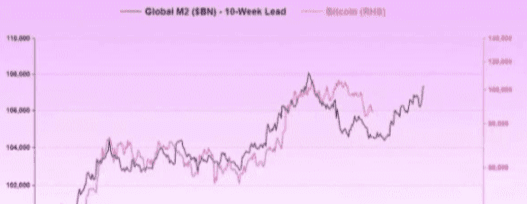
From September to December 2024, the market expects favorable conditions from the US elections and national reserves, with Bitcoin rising from $60,000 to nearly $110,000.
• After December, with the realization of favorable factors, a strong dollar, and rising interest rates, the market faced liquidity tightening, leading to a significant pullback in Bitcoin.
• But now, the situation is rapidly reversing — M2 is returning to new highs, liquidity is loosening again, and the financial environment is improving.
My judgment is that the market adjustment is nearing its end, and the next major wave for Bitcoin will likely occur in June-July. In other words, now is the best time to position yourself.
2. The altcoin score index - the bottom signal has appeared.
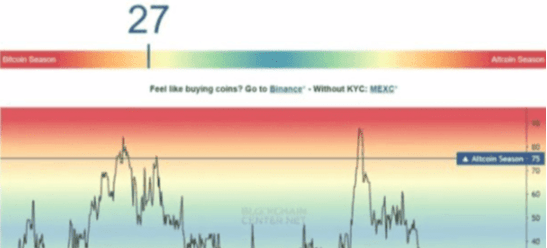
What is the altcoin score? It is an indicator that measures the enthusiasm of the altcoin market, typically used to determine whether it is a Bitcoin-dominant period or an altcoin season.
• When the index >= 75, it indicates that altcoins are overheating, and the market has entered a bubble phase, and one should gradually take profits.
• When the index <= 25, it indicates that the market is extremely quiet, and altcoins are entering the bottom range, making it a good time to bottom fish.
Currently, the altcoin score is 27, which is very close to the bottom signal of 25. This indicates that market sentiment has become extremely pessimistic, which is precisely the stage where quality altcoins have the most investment value.
3. The fear index is at the bottom.
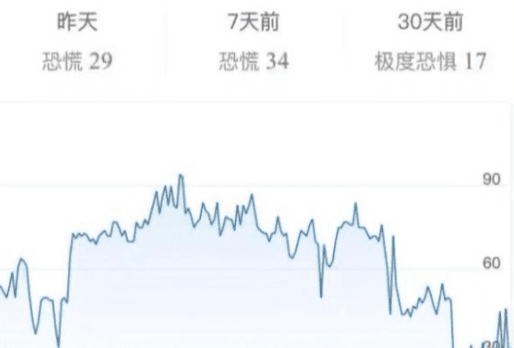
Market sentiment is often the most genuine signal. Whenever the market is in extreme fear, it often indicates that the bottom is near.
Since March, the fear and greed index has been in the 'extreme fear' or 'fear' zone. This indicates that most people have lost confidence in the market, and many have even started to cut losses and exit.
But the fact is, bull markets never end during extreme market panic; they end during extreme greed. This point can be seen by reviewing the peaks and troughs of the bull markets in 2017 and 2021, where extreme changes in market sentiment often mark turning points.
So what should we do now?
First, do not panic blindly; trust the data rather than the market's emotions.
Second, filter quality altcoins and prepare for the altcoin season in advance.
When bottom-fishing altcoins, be sure to carefully filter through aspects such as chip distribution, the degree of control by the main players, K-line trends, community atmosphere, and narrative logic. Currently, the altcoin market is severely divided; quality altcoins with community support and trading logic will see significant returns (3-5x) in the upcoming final surge of Bitcoin; while some weak coins will continue to spiral down until they reach zero, having lost their main trading support.
The old expert only does real trading; the team still has positions, hurry to get in.